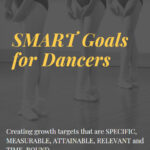The word “dance” is wonderfully versatile, capturing a wide range of movements and expressions. Whether you’re describing a graceful ballet performance or the lively atmosphere of a party, “dance” is a term that resonates deeply with rhythm and motion. But what if you’re looking to express yourself with even greater precision or a touch of unique flair? This is where exploring synonyms for “dance” becomes invaluable. A rich vocabulary of dance-related terms not only enhances your writing but also allows for a more nuanced and vivid portrayal of movement in both spoken and written communication. In this article, we will explore a variety of synonyms for “dance,” carefully examining their subtle differences and demonstrating how each can be effectively used to elevate your descriptive language.
When we consider “dance” as a verb, it generally refers to moving rhythmically, often to music. However, the manner in which we dance varies significantly, and consequently, so do the words we can use to describe these actions.
-
Describing Graceful and Rhythmic Movement: For movements characterized by elegance and fluidity, consider synonyms such as glide, sway, whirl, twirl, and pirouette. These words often evoke images of ballet, ballroom dancing, or any style where smoothness and poise are paramount. For example, instead of saying “They danced across the floor,” you could write “They glided across the dance floor,” immediately suggesting a more sophisticated and effortless movement. Similarly, “The ballerina pirouetted with breathtaking precision” paints a much more vivid picture than simply saying “The ballerina danced.”
-
Describing Energetic and Lively Movement: When the intention is to convey high energy and exuberance, synonyms like boogie, groove, shimmy, shake, jive, or bounce come into play. These words are perfect for describing less formal, more energetic types of dance, such as those seen at parties or in more casual settings. Instead of “The crowd danced to the music,” you might say “The crowd was boogieing to the upbeat music,” which better captures the lively and spirited nature of the dancing. Similarly, describing children as “bouncing with excitement” while dancing illustrates a joyful and unrestrained energy.
-
Describing Simple and Playful Movement: Sometimes, “dance” is used in a more relaxed or informal sense, perhaps referring to skipping or light leaping. In these situations, synonyms such as skip, leap, prance, frolic, or caper can be excellent alternatives. These words suggest a light-hearted, playful quality often associated with children’s movements or animals at play. For example, “She skipped happily down the street” is much more evocative of light, joyful movement than “She danced down the street.” Describing lambs as “frolicking in the meadow” beautifully captures their playful and unrestrained movements.
-
Describing Figurative Movement: It’s important to remember that “dance” can also be used figuratively to describe movements that are not literal. In such contexts, synonyms might include flutter, flicker, undulate, or ripple. These words are particularly useful for describing the movement of non-living things or abstract concepts. “The flames danced in the fireplace” is a common figurative expression, but you could also say “The flames flickered in the fireplace” to emphasize the unsteady, wavering movement. Similarly, “The curtains undulated in the breeze” provides a more poetic and descriptive image than “The curtains moved in the breeze.”
When “dance” is used as a noun, it can refer both to an art form and to a social event. Understanding these different noun senses of “dance” will further expand your vocabulary.
-
Referring to Dance as an Art Form: When you wish to refer to dance as a structured and artistic form of expression, you might consider terms like ballet, terpsichore, or movement art. “Ballet is a highly disciplined form of dance” is perfectly acceptable, but you could also highlight its artistic nature by saying “Ballet is a highly disciplined form of movement art.” Terpsichore, though less common in everyday conversation, is a more formal and classical term, often used in literary or academic contexts when discussing the art of dancing itself. Describing “contemporary dance pushing the boundaries of movement” emphasizes the evolution and innovation within the art form.
-
Referring to Dance as a Social Event: To describe a social gathering where dancing is the main activity, words like ball, prom, disco, party, or simply social can be effective synonyms. “They met at a school dance” is a common phrase, but specifying “They met at a school prom” gives a clearer picture of a formal high school dance event. Referring to an annual charity event as a “ball” immediately sets a tone of elegance and formality, as in “The annual charity ball was a grand affair.” Using “disco” or “party” instead of “dance” when describing a casual dance event emphasizes the social and less formal nature of the gathering.
Expanding your vocabulary beyond the basic word “dance” significantly broadens your expressive capabilities. By appreciating the subtle nuances of synonyms like glide, boogie, prance, ballet, and ball, you can communicate with greater effectiveness and vividness about movement, rhythm, and social interactions. Therefore, the next time you are tempted to simply use the word “dance,” take a moment to consider these rich synonyms and choose the word that best adds depth and color to your language, truly capturing the essence of the movement you wish to describe.


